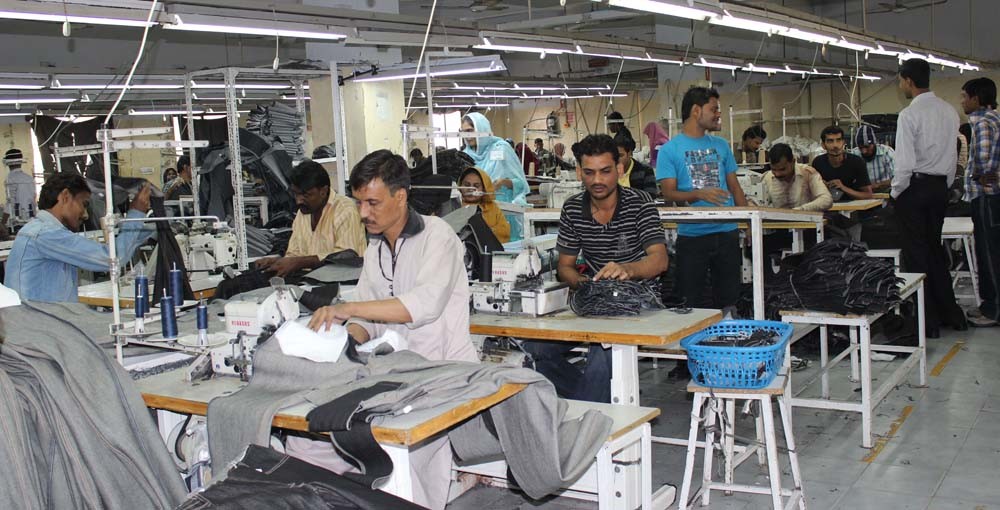
To get maximum benefits from GSP Plus facility, Pakistan needs to diversify its exports and launch an aggressive marketing campaign

Despite GSP Plus (Generalised Scheme of Preferences) status, Pakistan’s exports have declined during the first nine months of the current fiscal year due to energy shortages, delays in delivery schedules and high cost of doing business.
The country’s export of non-textile products has dropped by 11.29 per cent from $8.703 billion to $7.72 billion during July 2014 to March 2015 when compared with the export figures during the corresponding period last year.
Meanwhile, Pakistan’s exports of textiles and clothing have registered a decline of 5.99 per cent during this period and stood at $17.930 billion as compared to $19.07 billion in the corresponding period last year.
However, at 16.23 per cent, the fall in the exports of the country’s textile and textile products in March, 2015 was more pronounced. The export of textiles and clothing stood at $ 1.033 billion in March 2015 against $ 1.233 billion in the same month last year, according to data released by Pakistan Bureau of Statistics on April 20, 2015.
The European Parliament (EU) granted GSP Plus status to Pakistan from January 1, 2014 till 2017, enabling the country to export goods at preferential rate to 27 EU countries. The duty in EU countries ranges between 5.6 per cent and 9.6 per cent, therefore, as a result of GSP Plus facility Pakistan got benefit in terms of reduction in duty in the range of 2.5 per cent to 5.6 per cent.
GSP Plus gains would have materialised if Pakistan had taken appropriate steps to remove the supply-side bottlenecks, especially in the context of energy shortages and the cost of doing business. Processing mills in the Punjab received gas only three days a week, which affected the shipment and the buyers started preferring Bangladesh and India over Pakistan.
APTMA members have been urging the government to ensure regular supply of energy and also reduction in the cost of doing business so as to make the textile sector compatible with the regional competitors, like India, Bangladesh, Vietnam and Sri Lanka. They lament that in spite of constant and continuous representations by the textile body to the government and policy-makers, no worthwhile effort was made towards reducing the high cost of doing business, which has reached an alarming level, making the country’s products uncompetitive in the global market. The main factors of high cost of business in Pakistan are raw material, finance, human resource, power, technology, infrastructure and supporting institutions.
In addition to granting GSP Plus incentive to Pakistan and 15 other countries, the EU had earlier granted incentives to India and China under its facility called "Everything But Arms" (EBA). To maximise their benefits, naturally, there was expected a tough competition among GSP Plus and EBA countries. But, still the GSP Plus facility held the promise of transforming Pakistan’s economy by reviving closed manufacturing facilities, attracting new investment and halting the trend of relocating of industries to neighbouring countries.
However, to get maximum benefits from GSP Plus facility, Pakistan needed to diversify its exports and launch an aggressive marketing campaign, using innovative techniques. The EU is Pakistan’s largest trading partner. In 2012, total EU-Pakistan trade amounted to Euro 8.2 billion.
Traditionally, some 60 countries had been exporting garments to the West. After expiry of the quota regime on January 1, 2005, exports of several dozen of them had been witnessing a decline as trade and manufacturing consolidated in nations that excelled in skills, machinery, marketing techniques and the ability to cater to the rapidly changing global market trends and fashions.
Meanwhile, Bangladesh and India have been striving hard to boost their exports in general and that of textiles in particular. For Bangladesh, the recent global economic turmoil proved a boon for its garment industry, making it the top choice for low-priced basic items like T-shirts, denim pants, sweaters and shirts. Accounting for 80 per cent of exports and employing 40 per cent of industrial workforce, Bangladesh’s garment sector specialises in low-end clothing and is the impoverished nation’s main industry. Bangladesh has already emerged as the world’s second largest producer of apparel, according to IMF, and it might continue to dominate in the basic apparel sector if it scales up investment in new factories. To reap the bonanza, even some of Pakistan’s textile tycoons have re-located their units to Bangladesh.
Pakistan is the fifth top cotton producing country in the world. Out of about 16 million bales of cotton annually consumed in Pakistan, some four million bales are utilised for value-addition, fetching around eight billion dollars in foreign exchange. Some ten million cotton bales make insignificant addition to the country’s foreign exchange earnings because six million bales are used to produce yarn for export and four million bales are consumed in export of processed and grey fabric; while two million cotton bales are consumed for domestic products.
In view of cotton sector’s great potential in the development, growth and progress of nations, all stakeholders need to redouble their efforts with a view to reaping maximum benefits from the GSP Plus status during the remaining period of this facility, which would be expiring in 2017. In particular, they need to focus on value addition in cotton and production of quality products, keeping in view the demand in each and every region of the world. Increase in exports could bail the country out of its current economic crunch.